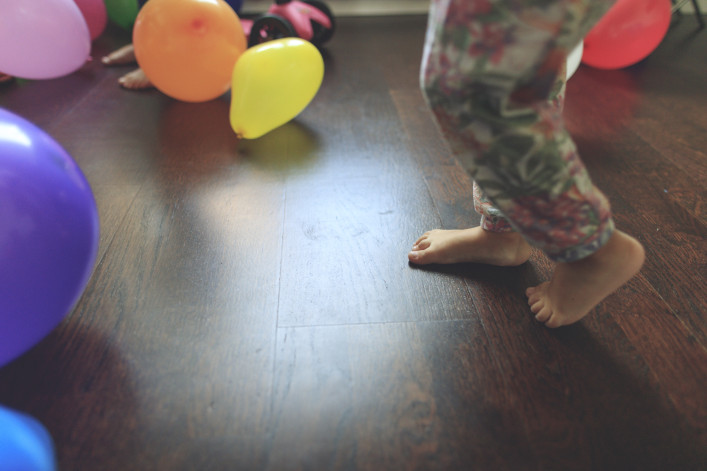How can I insulate my ceiling to quiet my noisy neighbor upstairs?

Here's what you can do from below.
iStock
Apartment living comes with many common complaints. One of the most frequent, is that of noisy neighbors, with noise from overhead causing more than a few tense elevator rides or awkward moments in the lobby.
If you’re dealing with noise, you’re likely aware of the “80 percent rule,” a common regulation for many buildings that requires 80 percent of the floor area to be covered with carpeting or rugs. (Note: while it may be part of a building’s bylaws or policies, it is not a city or state law.)
But say the carpet is already down, and you still hear the pitter patter of little feet/throbbing base/enthusiastic workout routines. Can you reduce sound from below? Is there anything you can do to insulate your ceiling?
The answer is yes, but it’s not an easy fix, and professional help will likely be required. Cost will vary, depending on the type of work you do, and the size of the area your are soundproofing. (It might cost you a few hundred dollars, or a few thousand.)
“Between labor and materials, most homeowners pay between $1,000 and $2,600 to soundproof a space, with the average project costing about $1,750, according to HomeAdvisor’s True Cost Guide,” says Dan DiClerico, smart home strategist and home expert at HomeAdvisor. “There are a lot of factors involved, including the choice of material and complexity of the room (odd-shaped spaces require additional material and cuts, driving up the budget)."
Option 1: Budget friendly, but ugly
The most budget-friendly option is, unfortunately, the least attractive.
“Acoustic foam panels, which resemble egg crate mattress covers, can be tacked directly to the ceiling, where they’ll do a good job muffling sounds from above. And you could be in and out for a few hundred dollars, especially if you do the installation yourself,” says DiClerico. “But the look isn’t exactly high-design.”
Option 2: Make the most of a drop ceiling
If you have a drop ceiling, you make holes in it every 16 inches or so (to be patched later) and spray foam insulation in the space.
“You spray it in really tight,” says Michael Hershkowitz, president of REDOnyc, who notes that the foam, which expands, comes in different densities, which provide different degrees of sound attenuation, or reduction.
Option 3: Go all out
If your ceiling is cement, a thin layer of sound attenuating rubber can be added to the ceiling, followed by sheetrock, with a drop ceiling then installed over that. Finally, the resulting space can be filled with foam insulation. (The rubber layer, which comes in one-quarter inch, half-inch, and one-inch thicknesses starts at $100 a roll, which covers 100 square feet. One-inch thick rolls are used in particularly loud places like gyms.)
This solution is “invisible and can reduce noises almost to zero. But it’s a complex, professional install that will likely set your back thousands of dollars. So, you need to ask yourself, ‘how much is the peace and quiet really worth?’" says DiClerico.
Not in your budget? DiClerico adds that there are many soundproofing strategies that don’t involve insulation.
"Adding upholstered furniture, soft wall hangings, and even bookcases to the room will help absorb sound. If you can encourage your neighbor to do the same, all the better," he says. "It’s also worth investing in a noise machine or ceiling fan to muffle unwelcome noises."
Then again, Hershkowitz says, “If a kid is playing drums and he’s only a sophomore in high school and he’s going to be doing it for years.”
You Might Also Like




























